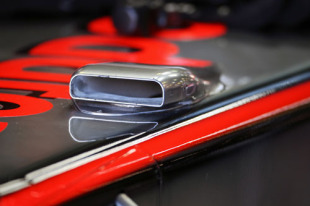- GP Week Technical Update
F-duct light

- Championship:
- FIA Formula One World Championship
Despite logistical problems (in fact the cars were shipped directly from Malaysia), the teams were still able to introduce new and interesting updates on the cars, or at least test their first draft versions before introducing the final version at the next GP in Spain.
Three teams brought their version of the F-duct system, used by McLaren since the first race, to Shanghai: Ferrari, Mercedes and Williams. Ferrari tried its version briefly Friday morning, only on Alonso's car, while Mercedes tested it on both cars, and Williams was able to briefly test the device during the free practice on Saturday morning.
Looking at the three devices, there is a different interpretation of each of these teams of the McLaren device, though in fact none of them being in the true sense of the word an F-duct itself.
The Ferrari solution is actually one that embodies the characteristics of the McLaren one, but it differs from the latter for the position of the snorkel on both sides behind the airscope inlet, and also for the activation method.
As with McLaren it is activated by the driver. The Ferrari version is more likely to activate through the achievement of a minimum pressure inside the pipeline that passes through the engine cover. In fact, the presence of a dual snorkel suggests a necessary symmetry useful for the activation of the system only in a straight line, when the pressure within each channel is identical.
The system adopted by Mercedes is visually very different from that of McLaren and Ferrari, being made up of only two small slits at the entry edge of the rear wing, which channel the air through a duct, making its escape from two slits in the back of the flap. The system is controlled by placing pressure sensors on both surfaces of the wing.
Besides the introduction of these devices, other teams have adopted new solutions or developments in this race.
One of these is Renault, which continues the development of detail of its car and, in China, showed a further evolution of the front wing now in its third version. In particular the area of the endplates, proposed amendments to both the semi-vertical fin, now much lower compared to the model introduced in Australia, and a different vertical profile to the upper end of the additional profile, characterised by a cross section as an aerofoil and not squared as before.
These changes have primarily the effect of reducing the turbulence generated in this area of the car, and also reduce the front end's sensitivity to variations in the ride heights.

